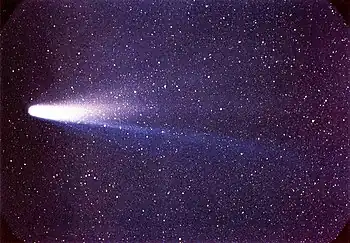
Halley's Comet is the best-known of the short-period comets, and is visible from Earth every 75 to 76 years. Halley is the only short-period comet that is clearly visible to the naked eye, and thus, the only naked-eye comet that might appear twice in a human lifetime. Other naked-eye comets may be brighter and more spectacular, but will appear only once in thousands of years. Halley's returns to the inner Solar System have been observed by astronomers since at least 240 BC, and recorded by Chinese, Babylonian, and mediaeval European chroniclers, but were not recognised as reappearances of the same object. The comet's periodicity was first determined in 1705 by English astronomer Edmond Halley, after whom it is now named. It last appeared in the inner Solar System in 1986 and will next appear in mid-2061. During its 1986 apparition, Halley's Comet became the first to be observed in detail by spacecraft, providing the first observational data on the structure of the comet nucleus and the mechanism of coma and tail formation. These observations supported a number of longstanding hypotheses about comet construction, particularly Fred Whipple's "dirty snowball" model, which correctly surmised that Halley would be composed of a mixture of volatile ices, such as water, carbon dioxide and ammonia, and dust. However, the missions also provided data which substantially reformed and reconfigured these ideas. (Full article...)